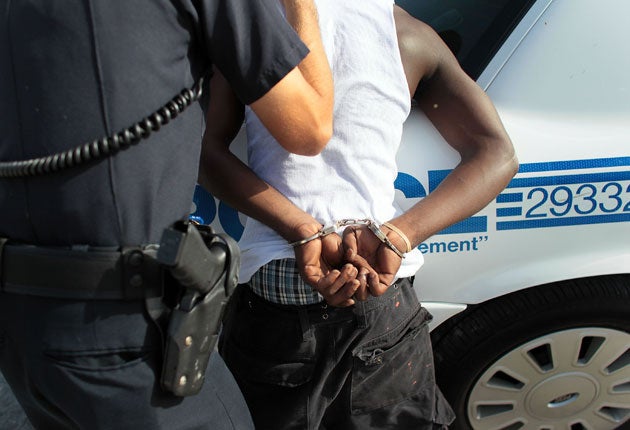Rupert Cornwell: Murder mystery – why have US cities become safer?
Out of America: Serious crime rates have declined steadily in recent years, and the experts are at a loss to explain it

Longer ago than I care to remember – slightly over 20 years – we moved to Washington and have lived there more or less ever since. Back in 1991, no fewer than 479 murders were committed in this city of 600,000 people, which made the capital of the free world one of America's most dangerous places. Last year, there were 131 murders, the fewest in almost half a century, even though the population's the same.
And Washington is no exception to the general rule. All across America violent crime rates have been falling steadily and consistently for more than a decade. If you take into account the growth in population, you are less likely now to be killed, mugged, raped or robbed in this country than when Richard Nixon was in the White House.
When I arrived in the US, being perceived as "soft on crime" could break a politician's career. But today crime is simply not an election issue.
A cynic could argue that crimes are fewer because dispirited citizens no longer report them. But the facts don't support this. Across the US, according to the FBI, the murder rate dropped by 4.4 per cent in 2010. Last year there were 9.5 per cent fewer robberies than in 2009, a decline that followed one of 8 per cent compared with 2008. And this during the worst recession since the Great Depression, disproving the notion that hardship turns law-abiding citizens into dangerous criminals.
In fact, crime did decline during the 1930s, but for a specific reason: the repeal of prohibition in 1933 that put swathes of organised, and often very violent, crime out of business. For 11 straight years thereafter, the national murder rate fell. Today we are in the midst of an even longer period of decline, which cannot be accidental. But America's finest criminologists and legal experts disagree on the reasons.
The explanations range from the obvious to the bizarre. The most obvious, and which undoubtedly contains a grain of truth, is simply that the country is getting older. Violent crime tends to be the business of young males, especially in the 17-to-24 age group. But as a share of the overall population that group is shrinking.
Others say it's large-scale incarceration and long prison sentences. At any given moment, almost 750 of every 100,000 Americans are behind bars, the highest ratio of any country. America's packed jails may be a national disgrace, but you can't lock up more than two million people without having some impact on the crime rate. The problem with this theory is that imprisonment rates have levelled out and in some places fallen. Yet the crime rate has continued to fall, even with more bad guys back on the street.
Perplexed, some criminologists have therefore posited an "Obama effect". The election of the first black president could have inspired the young blacks who are disproportionately convicted of violent crime to mend their ways. Others point to "smart policing", the increased presence of police at known hot spots for crime.
That too has undoubtedly helped some cities to lower their rates. In Washington, however, the startling decline has largely reflected the end of the 1980s crack cocaine epidemic, which spawned anarchic gang warfare in the deprived south-eastern part of the city where tourists rarely go.
Meanwhile, liberals and conservatives have their pet reasons. Far from encouraging crime, argue the latter, laxer gun laws have made America safer by allowing people to defend themselves. Liberals counter that legalisation of abortion played a part, reducing the number of unwanted children born to poor families or single mothers, who might otherwise have slipped into a life of crime.
But are even all these factors enough to explain what has happened? In 2007, an economist, Rick Nevin, produced data showing an exact fit between lead poisoning, long known to influence behaviour, and the crime rate. As lead levels in paint, water and, above all, petrol rose and fell, so did the crime rate, with a 20-year delay as children exposed to lead when very young came of age. If Nevin's thesis is correct, crime rates will continue to fall.
But could violent video games be helping too? Again it's counterintuitive – video violence is supposed to desensitise people to the real thing. But for some, might not simulated violence be a satisfying substitute?
Finally, criminals may believe that with new technology they're more likely to get caught. That too flies in the face of conventional wisdom, that criminals don't worry about the consequences of their deeds. But the advent of DNA evidence, and the ubiquitous camera phone, may be changing such calculations. If so, long may the trend continue. In these tough times, all good news is welcome.
Join our commenting forum
Join thought-provoking conversations, follow other Independent readers and see their replies
Comments